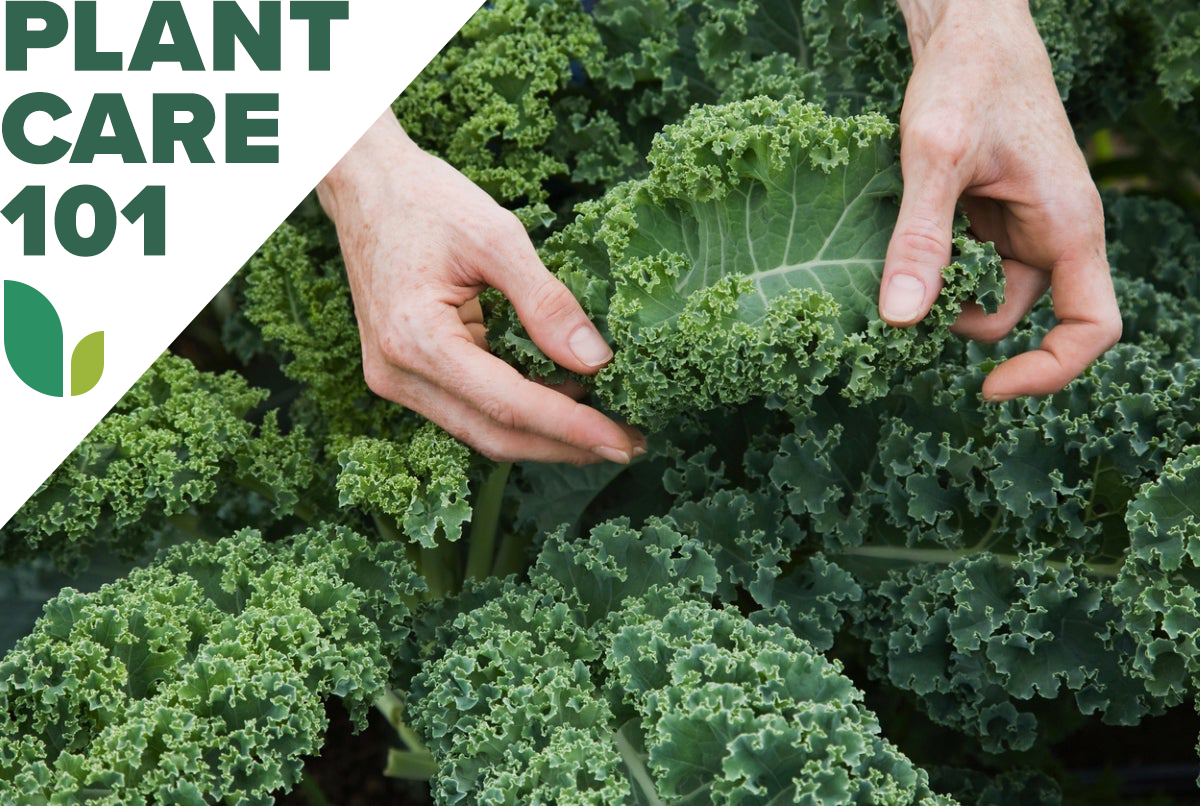

We may earn revenue from the products available on this page and participate in affiliate programs. Learn More ›
Is kale good for you? The answer is a resounding yes! Kale often is reputed to have more vitamins and minerals than any other garden vegetable. Its list of nutrients includes vitamins A, B6, C, and K, as well as calcium, copper, iron, manganese, and potassium. It’s also loaded with fiber and water. Fortunately, kale is one of the easiest vegetables to grow and can withstand frosty temperatures that would turn other leafy greens into mush.
In fact, the plant prefers cool conditions. So when you’re considering how to grow kale, remember that it performs best in spring and autumn and languishes when temperatures top 75 degrees.
Growing Kale at a Glance
Common Name: Kale
Scientific Name: Brassica oleracea Acephala Group and Alboglabra Group
Hardiness Zones: 6 through 11
Soil: Fertile, well-draining garden loam
Light: Full sun
Water: High
Food: Compost and/or high nitrogen fertilizer
Propagation: Seed or stem cuttings
Safety: Edible
Kale Characteristics
A non-heading member of the cabbage family, kale typically grows between 1½ and 3 feet tall if not harvested while young. However, dwarf and “flowering” varieties may mature at lower heights, while the walking stick type of kale can shoot up to 20 feet. Kale’s loose clumps of often frilly foliage vary in color from green to blue-green to nearly black. Although usually grown as an annual, the plant actually is biennial and—if it overwinters—may send up stalks of four-petal white or yellow blooms in spring.
Flowering kales, frequently sold as autumn container or edging plants, form rosettes of foliage somewhat resembling frilly roses, typically embellished with red, pink, or white hues as well as green. So-called “flowering cabbages” actually are kales as well but have smoother edges to their leaves. Although the ornamental varieties are edible, they tend to be more bitter than types grown for their greens.
RELATED: 11 Types of Asian Greens and How to Grow Them
Recommended Kale Varieties
- Chinese kale: Often called Chinese broccoli because its leaves and stems resemble those of that vegetable, this tasty type reportedly is more heat-tolerant than most other varieties.
- Crane ornamental kale: The Crane series, which includes red, pink, and white cultivars, produces long-stemmed rose-like, smooth-edged kale “heads” about 6 inches across for use in bouquets more than recipes.
- Dwarf blue curled vates kale: One of the lowest-growing types, this curly kale typically tops out at about 14 inches with tasty blue-green leaves.
- Kamome flowering kale: Like the Crane series, the Kamome series offers red, pink, and white cultivars with green edges. Plus, these ornamental kales boast 12- to 14-inch- wide frilly “heads” that hug the ground rather than growing on long stems.
- Red Russian kale: This magenta-stemmed and veined variety with blue-green foliage reportedly is more tender and mildly flavored than other kales.
- Tuscan or Lacinato kale: Also known as dinosaur kale or black kale, this type boasts blue-green to black leaves with roughened “skin” resembling that of a reptile. It has a chewy, pleasant texture when used in recipes.
Planting Kale
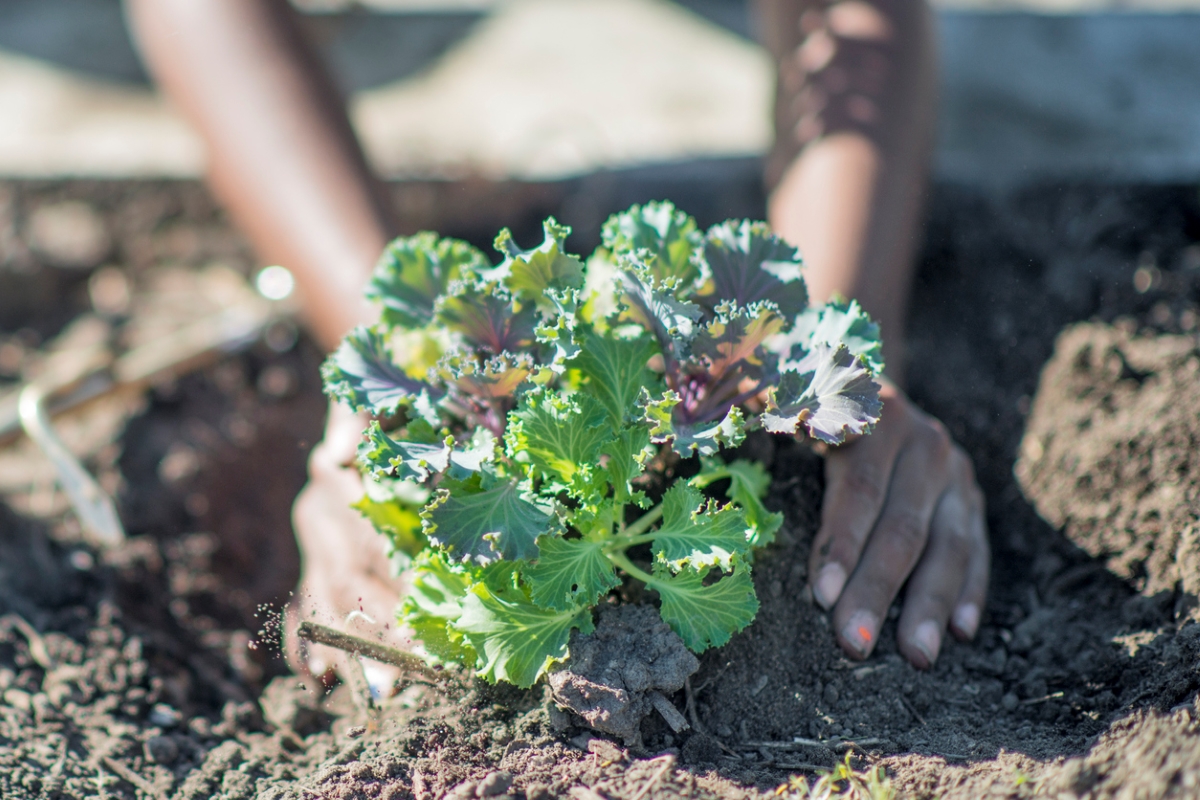
To ensure that your kale plants remain healthy, seed them, or set them out in an area where other brassicas haven’t grown for at least 4 years. Growing kale at the right time helps ensure a decent harvest.
When is the best time to plant kale?
You can sow kale seeds directly into your garden a month to 6 weeks before your last spring frost or in early to mid-April if your last spring frost date is in mid-May. Alternatively, start seedlings indoors a month before you intend to set them out, which might be in mid-March if you want to transplant them into the garden in mid-April. Sow seeds for a fall crop or for flowering kale 3 months before your first autumn frost.
Where can kale grow?
Choose a location that receives at least 6 hours of sunlight per day, preferably where the soil is fertile, drains well, and has a pH between 6 and 7.5. If you are planting in early spring, you may want to opt for a raised bed, since the soil there should be less soggy and clumpy than soil that’s not raised above ground level.
How do you plant kale?
Keep in mind that kale should mature about 10 weeks after you sow it.
- Sow kale seeds ¼ inch deep and 1 inch apart in rows 18 inches apart.
- Keep the soil damp until the seeds sprout in 4 to 7 days.
- Once the seedlings each have three or four leaves in addition to their two seed leaves, thin or transplant them to stand about 4 to 8 inches apart for baby greens and 12 to 18 inches apart if you intend to grow full-size plants.
Can you grow kale in containers?
Growing kale in containers is possible and not difficult to do. Colorado State University Extension recommends growing kale and other greens in a pot that is at least 18 inches across and 6 inches deep. If you are choosing the ornamental type of kale to grow in a pot and intend to include fall flowers with it, you might need an even larger container. Just make sure that it has drainage holes.
Can you overwinter kale?
In USDA Zones 8 through 10, kale will grow outdoors all winter with no need for protection. Elsewhere, you might want to plant your autumn crop inside an unheated greenhouse, cold frame, or tunnel constructed of plastic or heavy row cover. Alternatively, move container-grown kale into an unheated greenhouse or similarly protected area.
If you provide some protection from the elements, the plants should continue to produce greens all winter, since some types will tolerate temperatures down to 5 degrees Fahrenheit. In fact, frost reportedly sweetens their flavor. Just remember that you will need to open up the greenhouse or other structure a bit on warm days to prevent the plants from overheating.
Watering Kale
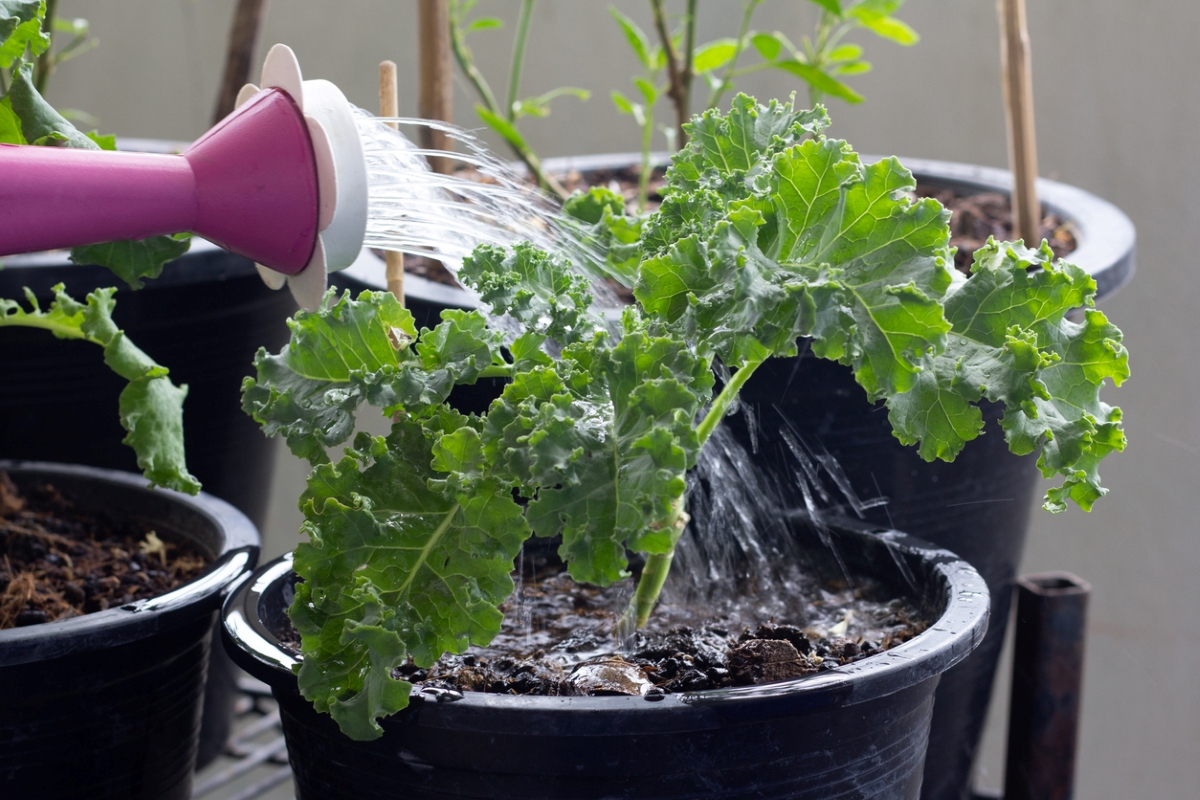
Ensure that your kale plants receive at least 1 to 1½ inches of water per week, preferably via drip irrigation if not from consistent rainfall. Since plants that dry out or overheat are more likely to become bitter, it’s a good idea to mulch them with 3 to 4 inches of grass clippings or straw. That mulch should help keep the soil both cool and moist while also suppressing weeds through all of the kale growing stages.
Fertilizing Kale
Dig 1 or 2 inches of compost into the surface of the site where you plan to plant kale. In some gardens, that may be enough fertilizer for greens. But if your plot is nitrogen-deficient, you may want to add a high-nitrogen organic fertilizer such as 10-3-1 at the rate of ¼ cup for every 10 square feet of ground. Apply it once a month after the plants reach 4 inches in height, watering it into the soil.
Pruning Kale
Although most kales don’t require pruning, you will need to snip off the lower leaves on long-stemmed ornamental types such as the Crane series, which are intended to be used as bouquet “flowers.” The Johnny’s Selected Seeds company suggests that you begin to do that when the plants reach 10 to 12 inches high and repeat the process several more times until the stems attain their ultimate height of 24 inches and are ready for cutting and arranging.
Propagating Kale
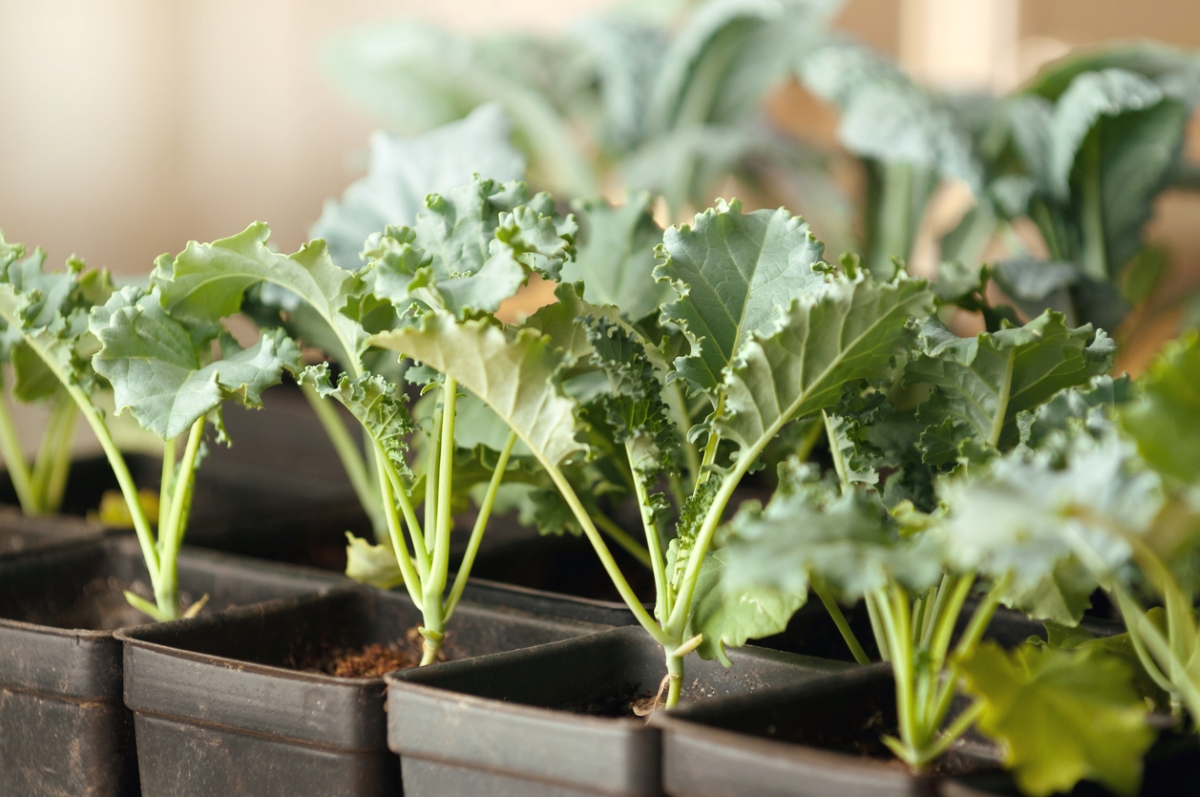
Directions for how to grow kale from seed, the most common propagation method, appear above under the “Planting Kale” section. The seed should germinate at any temperature between 45 degrees and 85 degrees Fahrenheit.
Growing kale from cuttings is also possible for types such as tree kale that do not produce seed. Snip a tip cutting about 1 foot tall and ½ inch in diameter from the mother plant, removing all foliage except a couple of leaves at the tip. Then bury the bottom two thirds of the cutting in a pot of damp soil, where it should root in about a month.
Safety Considerations
All parts of kale are edible. However, as Time Magazine reports, members of the cabbage family remain among the foods most likely to cause indigestion, since such brassicas contain a sugar called raffinose that ferments inside the gut.
Fortunately, the healthier you become through consuming nutrient-rich vegetables such as kale, the healthier your digestive system becomes and the better it will get at processing such vegetables. In the meantime, you may want to take a digestive aid before consuming brassicas.
Potential Pests and Diseases
One of the benefits of kale is that it is less prone to disease than most other brassicas. However, it can contract maladies common to the family, including clubroot, which causes swollen roots and stunted growth. To help prevent it, don’t plant your kale where other brassicas have grown recently, and avoid planting it in soil that is oversaturated or overly acidic.
Because kale also attracts pests common to brassicas, such as cabbage worms or cabbage loopers, it sometimes is used as a trap crop to lure those away from other plants. Handpick the worms and drop them into soapy water to kill them.
RELATED: How to Get Rid of Cabbage Worms
Harvesting Kale
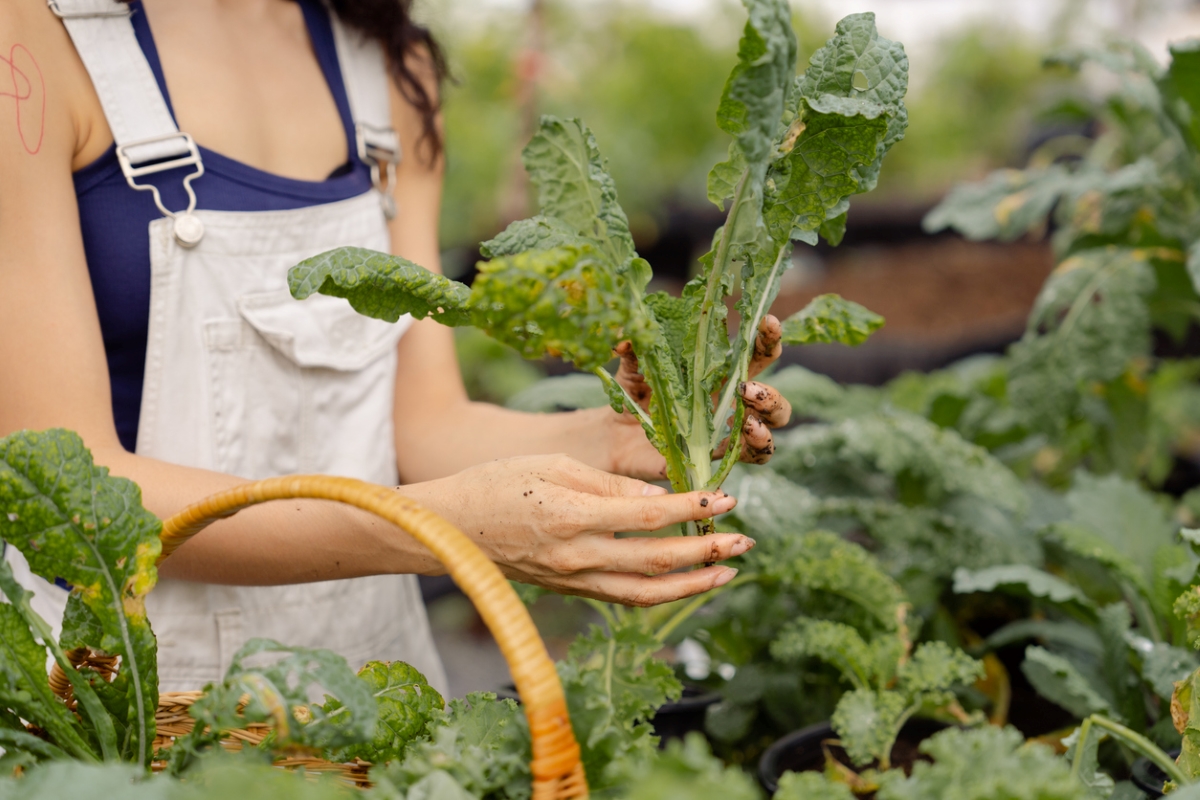
How long you should let kale grow will depend on how you plan to use the greens. After harvest, store kale for optimum freshness.
When is the best time to harvest kale?
If you prefer raw and tender baby greens to use in salads, you can begin to pick leaves from kale when the plant stands 4 to 6 inches tall and is about a month old. If you want larger leaves, wait until the plants are 2 months old and cook the leaves before you eat them. For the best flavor, try to harvest all of this fast-growing vegetable before summer heats up.
How do you harvest kale?
Use a clean, sharp knife; garden shears; or pruning shears to cut or snip leaves from the plants.
- You can pick just the outer leaves from each plant if you want that plant to continue to grow, making sure that you gather only about one third of those leaves.
- Wait about a week to harvest more greens in this manner.
- Alternatively, you can harvest the entire plant by cutting it off just above ground level.
How do you store kale?
Leave kale unwashed until just before you intend to eat it, storing it in an airtight plastic bag inside the crisper drawer of your refrigerator, where it should keep for at least 5 days. You can also freeze kale by first blanching it for 2 minutes, then covering it in ice water, leaving ½ inch of headspace, and placing it in airtight containers in the freezer. Mushy frozen kale will be more appropriate for soups and casseroles than for salads.
Looking for more health-promoting vegetables? Check out our guides on growing asparagus, brussels sprouts, and sweet potatoes.
